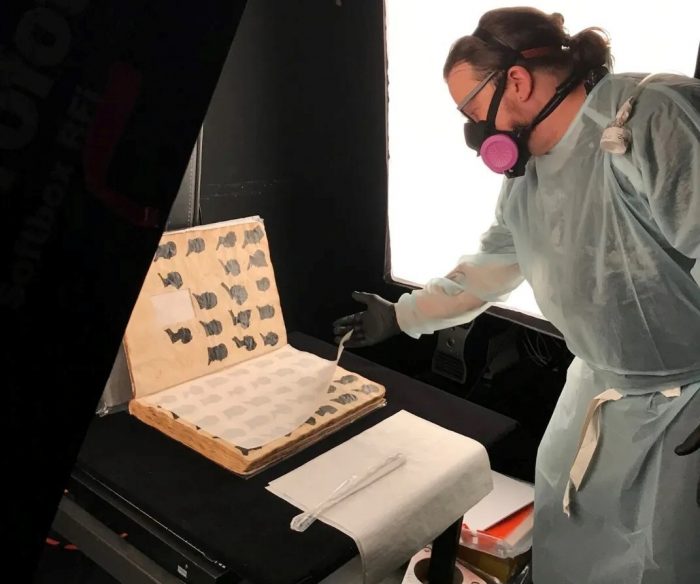Season finale: The Toxic Book of Faces
We’d all like to be remembered after we’re gone, but what if your legacy is leaving a poisoned portrait for posterity?

Before the invention of photography, only the rich could afford to have portraits of themselves. But in the early 1800s, a device called the physiognotrace democratized portraiture, making it possible or everyday people to have their images captured in silhouettes. A man named William Bache traveled the United States creating hundreds of silhouette portraits with the aid of the physiognotrace, leaving behind a ledger book that gives us a rare glimpse of early America. A ledger book…laced with poison.

Guests
- Robyn Asleson, curator of prints and drawings at the Smithsonian’s National Portrait Gallery
- Nora Lockshin, senior conservator for archives at the Smithsonian Libraries and Archives
- Wendy Bellion, Sewell C. Biggs Chair in American Art History, and associate dean for the humanities at the University of Delaware
- Carolyn Hauk, doctoral student in the art history department of the University of Delaware, former intern at the Smithsonian’s National Portrait Gallery
Listen Now

Links and Extras
- Flip through the fully digitized album of more than 1,800 silhouettes from the Smithsonian’s National Portrait Gallery.
- Learn more about the preservation process and precautions taken by conservators in Inside Smithsonian Research magazine (pages 8-9).
- Arsenic was a ubiquitous ingredient into the early 1900’s, present in everything from paints and fabric dyes to beauty products like these edible Arsenic Complexion Wafers, now in the collections of the Smithsonian’s National Museum of American History.
- William Bache’s ledger is not the only toxic book tucked away in museum and library collections! Learn more about efforts to preserve and safely store these historic volumes from the Poison Book Project at the International Institute for Conservation of Historic and Artistic Works.
- See more captivating uses of silhouettes in American art from the 18th century through the present day in the Smithsonian’s National Portrait Gallery exhibition, Black Out: Silhouettes Then and Now.

Transcript
Posted: 10 July 2023
- Categories:







